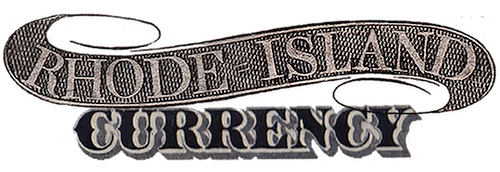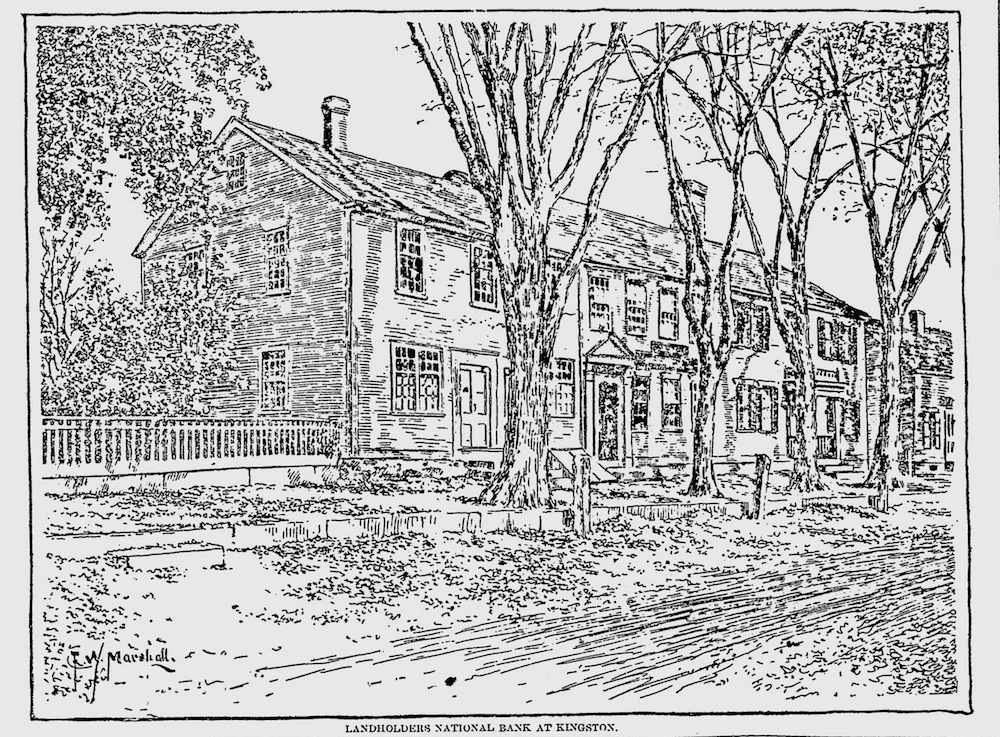Landholders Bank, South Kingstown
The Landholders Bank was organized in 1818 as a country bank meant to service the agricultural interests of South County, Rhode Island. Its starting capital was $50,000. John B. Dockray was named the first president and Thomas B. Wells became cashier. When Wells died in 1854, his son Amos Wells (a recent graduate of Brown University and only 20 years old) took over for a time. Eventually, Thomas’ other son T.P. Wells (stepbrother to Amos) left his job at the Wakefield Bank to assume the position. T.P. Wells also appears to have served as the cashier of the Narragansett Bank in Wickford for a year (1829).
Landholders Bank was located in the village of Kingston, in the town South Kingstown. It occupied the John T. Nichols house, a colonial structure at the intersection of Kingston Road and Potters Lane. Its offices were shared with the Kingston Savings Bank. At the time, the village boasted a post office and a successful hat factory.
The location of the bank has been described in a report by the Rhode Island Preservation Society in this way:
“The first building here was a saddler’s shop erected by John Weeden in 1754. In 1792, the property was sold to John T. Nichols, who built a house at the present east end in 1802 to provide lodgings and hospitality for travelers- members of the court, and boys attending the academy. A road ran between the two buildings until they were joined to make room for the Landholder’s Bank in 1818.”
A picturesque account from 1898 identifies the bank as Kingston’s most prominent feature, far more significant than the area’s “curiously celebrated” Agricultural College (later, University of Rhode Island):
“[The Landholders National Bank and the Kingston Savings Bank] occupy one office, living together in blissful harmony. The clerical forces of the two consists of one man, who is treasurer, cashier, teller, clerk, office boy and about everything else. Some time they expect to build a suitable structure, a bank building of distinction. It is to be hoped, with due respect to the go-ahead progressive spirit of Kingston village financiers, that the expectation will never be realized, for the present habitation of the Landholders has served the purpose for 80 years, and it is of a style of architecture so opposite that of the Industrial Trust Company’s skyscraper [in Providence]…
“Outside there is nothing resembling bustle or confusion- nothing to remind the New Yorker of Wall street. Tall, stately trees, planted maybe a century since, adorn the village street. Little children play in the middle of the highway, make mud pies in the summer and mould snowballs in winter. Of cats and dogs there is a plethora. On the steps of the bank the village youth of kindergarten age sit and sun themselves. Now and then a customer comes and the children move to one side so that he may enter. They look up into his face inquiringly, if he is a stranger, which is rarely ever the case.
“Inside there is a counter, surmounted by a brass wire-rail. Behind it Mr. Perry may be found from 9 in the morning until 4 in the afternoon, excepting one hour at noon, when the banks are closed for lunch. In front of the counter is a small floor space, a part of which supports a writing table and a few chairs. The interior looks reposeful and quaint, decidedly unlike that of a large city banking institution. Yes ever since the Landholders was established, its customers have transacted business in this curious, petite office.” — “Kingston Village,” Manufacturers and Farmers Journal, November 10, 1898.
The institution became the Landholders National Bank on May 17, 1865 and was granted charter #1158. According to the National Bank Note Census, it issued $789,550 in large-size banknotes, ranging in denominations from $1 to $100. Six of these bills have survived to this day.
On March 28, 1905, the Landholders National Bank surrendered its charter and reorganized as the Kingston Trust Company. It lasted twenty years before it faced a scandal that led to its collapse. On February 16, 1925, it was discovered that one Maude E. Tefft, secretary-treasurer of the bank, had embezzled $50,000. Altogether, $110,000 in company funds was misappropriated by a circle of swindlers connected to Tefft. Kingston Trust was forced into receivership by the state’s bank commissioners and never reopened.
The newspapers of the day claimed that it was the first time in over a a century that a woman was responsible for the failure of a New England bank. Much of the money appears to have been lost on phony stocks. It was also noted that a spinal injury may have led Maude Tefft to take money from the company. She needed the cash to purchase an automobile so that she could drive to Providence to visit her physician. Some speculated that her physical disability was compounded by a neurotic condition. In the end, Tefft was found guilty but her sentence was light. She was paroled from state prison on January 1, 1926.
Kingston is best known today as the home of the University of Rhode Island. The bank’s former quarters at 2587 Kingston Road, adjacent to the school’s campus, currently serve as the home of the South County Art Association.

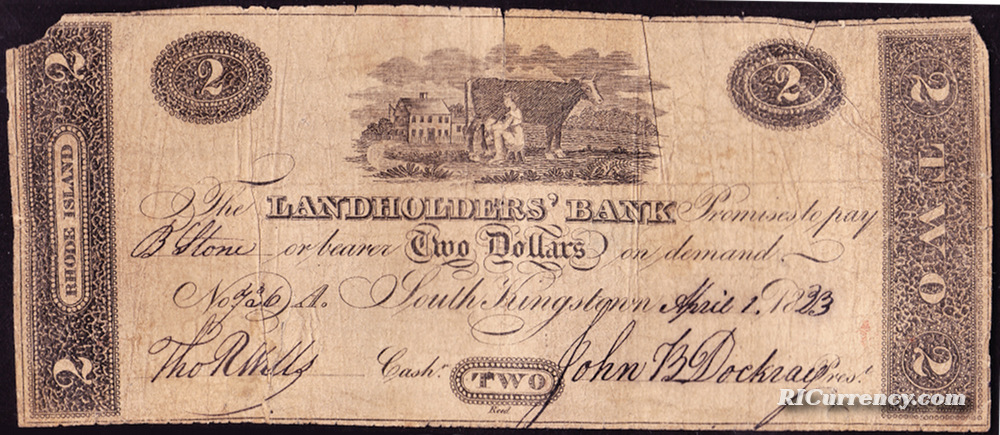
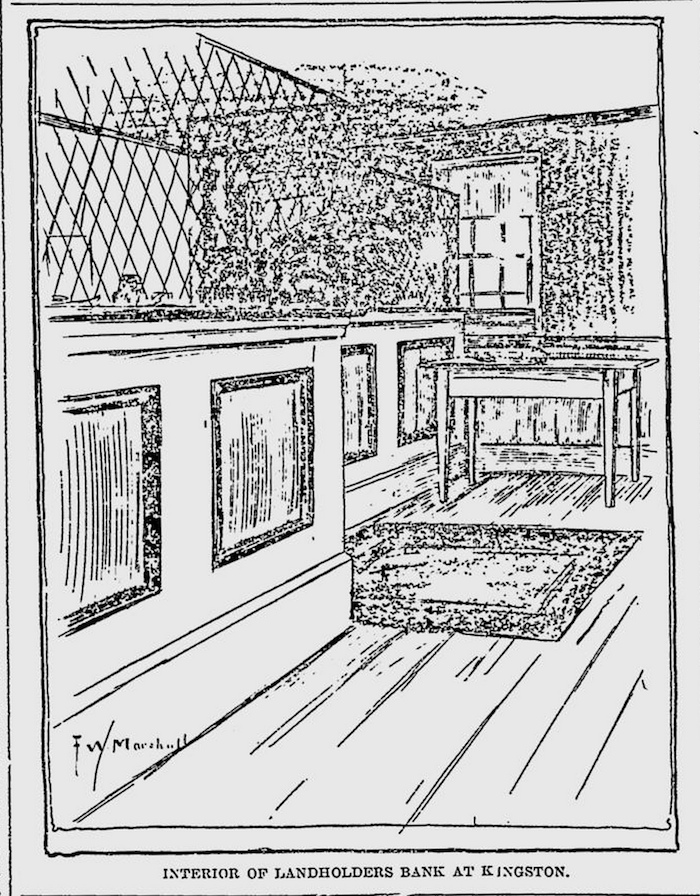
The “curious, petite office.” From, “Kingston Village,” Manufacturers
and Farmers Journal, November 10, 1898.
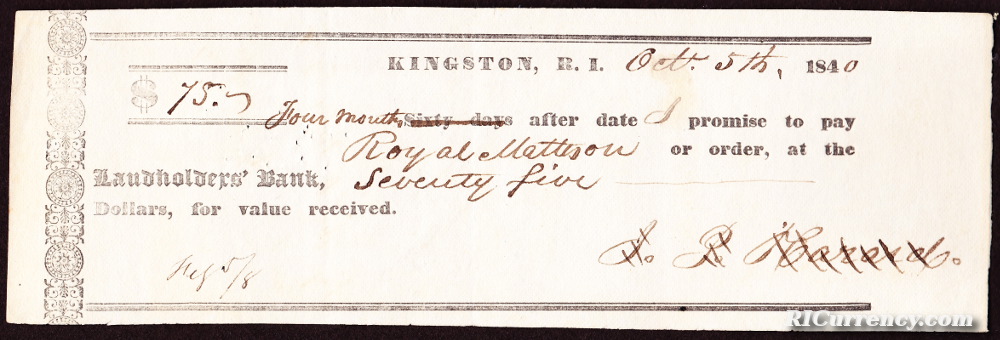
A four month promissory for $75, from Isaac Peace Hazard to Royal Matteson, October 5, 1840.
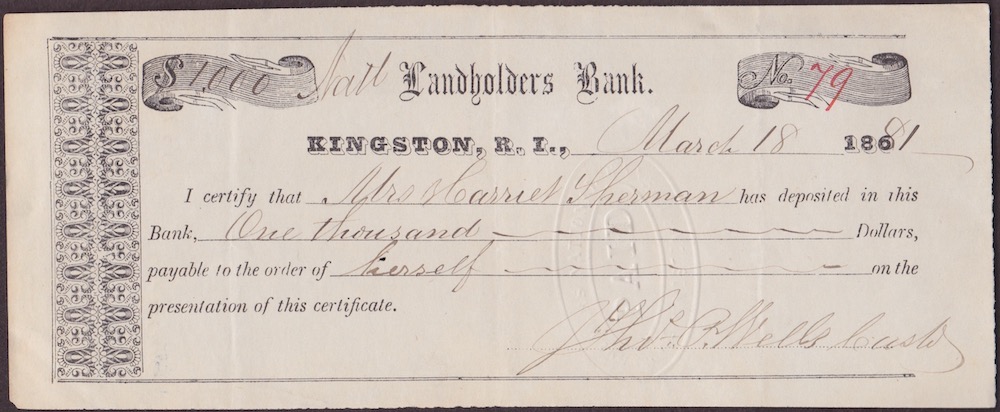
March 18, 1861 slip showing that a Mrs. Harriet Sherman had deposited $1,000 into the Landholders Bank. Signed by Theodore P. Wells, cashier.
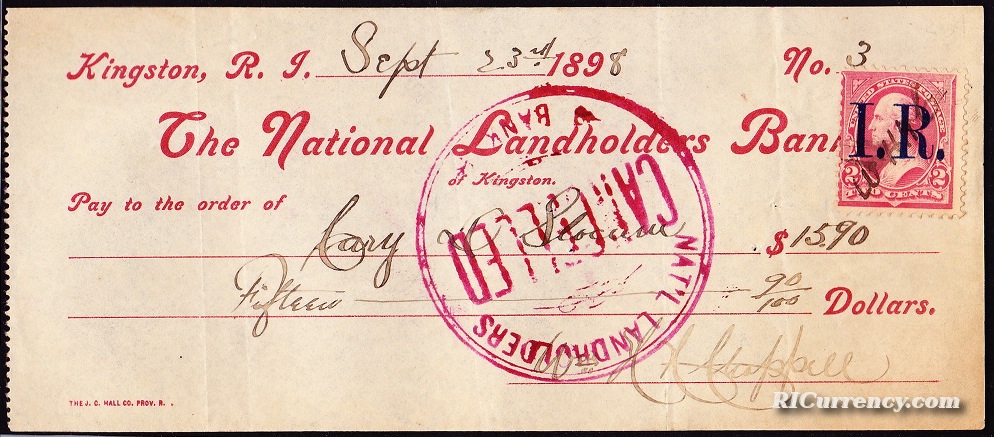

Early 20th Century stock certificate. The National Landholders Bank was reincorporated in 1905 as the Kingston Trust Company,
in Kingston, a village in the town of South Kingstown.
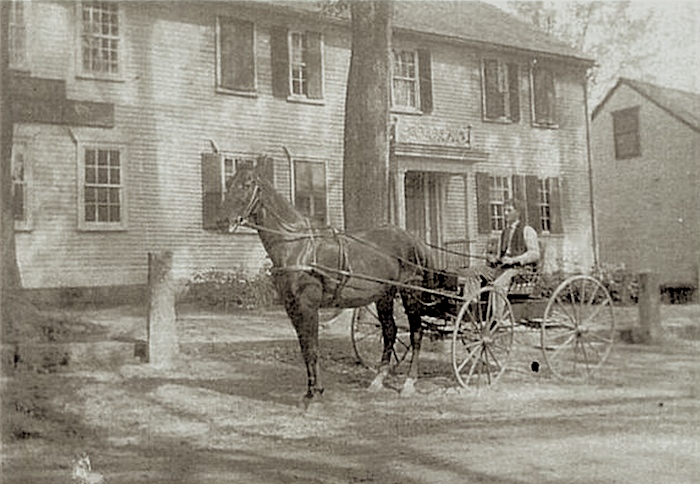
An undated photo showing the Landholders Bank offices on Kingston Road (upper left, the sign is partially visible).
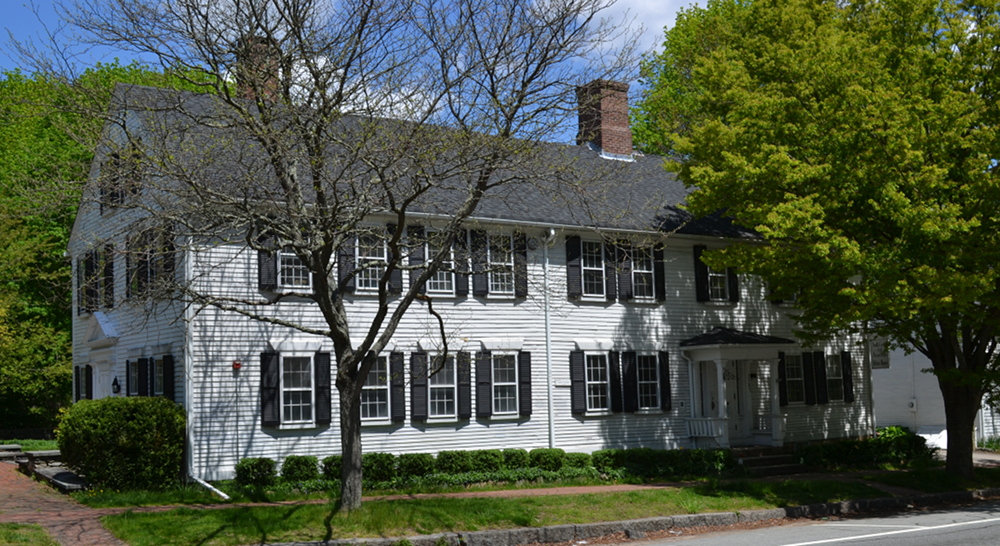
2587 Kingston Road, Kingston, South Kingstown. The John T. Nichols House/Landholder’s Bank today, now home to the South County Art Association.
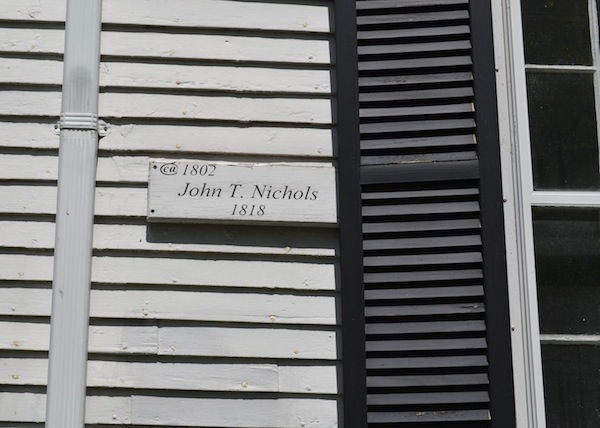
Plaque on the building.
